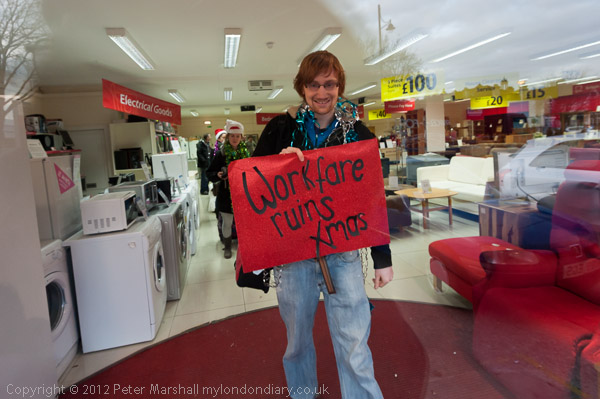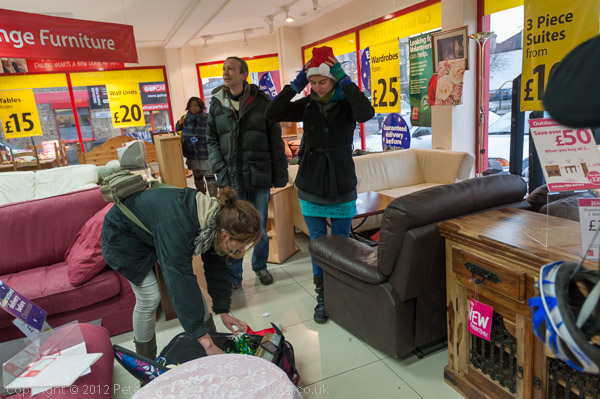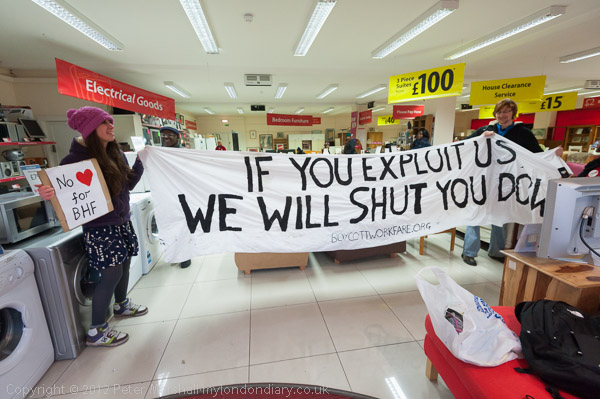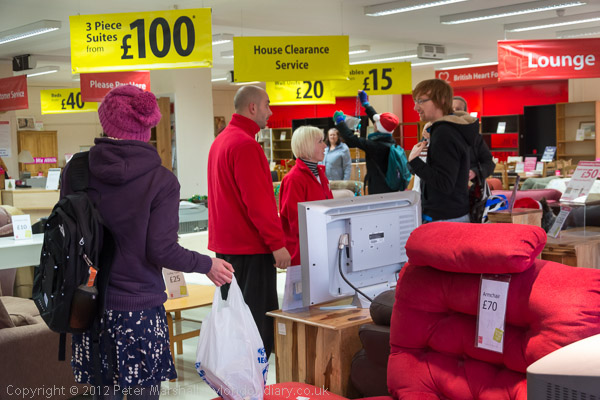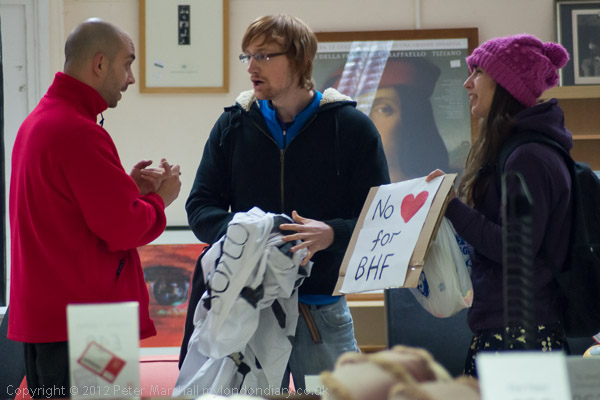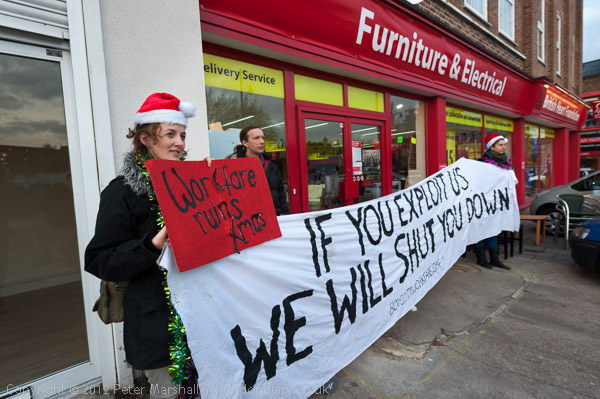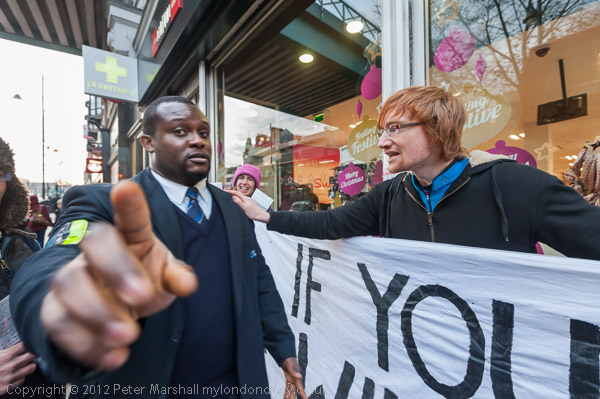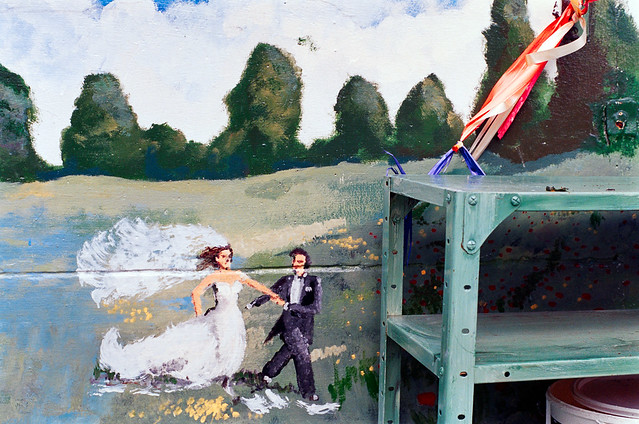Toys, Taverns, Timber & More: More from my walk on Sunday February 25th 1990 which began with Around Finsbury Park – 1990. The previous post was Along Hornsey Road, Holloway 1990.
A factory here was established here next to the house in Lambton Road of William Britain (1828-1906). The company grew greatly and the factory expanded after in 1893 his son William Britain Jnr found a way of casting three-dimensional hollow-cast soldiers in 1893 using an alloy of lead, tin and antinomy. Previously toy soldiers had been flat, two-dimensional.
Sales slumped during and after the Great War for Britains Ltd and at Christmas 1921 they introduced Britains Model Home Farm, which became a big seller; later they also made zoo and circus figures.
In 1931 they expaned with a new factory, the North Light Building in Walthamstow. They finally left this Crouch Hill factory and moved completely to Walthamstow in 1968. That closed in 1991 with production being moved to Nottingham.
This building on the corner of Hornsey Road and Fairbridge Road offering timber, building materials and electrical supplies to the trade and for DIY use clearly had had a rather different past with this rather grand entrance. I had photographed the building the previous year and commented on it but had not found out much about its history.
According to Edith’s Streets it was orginally a coffee tavern, the Jubilee Hall, and from 1905 until 1937 was the premises of Newton and Wright, electrical and scientific instrument makers. They were the makers of The British Snook Machine, a “1920s gas filled or cold cathode medical X-ray tube with a collimator extension of the anticathodeode“. If like me you are totally mystified you can find out more and see pictures on The Hornsey Road blog.
E D Elson had a yard at 169 Fairbridge Road for 43 years from when they were founded by Eddie Elson in 1968, along with branches in north London and Hertfordshire – presumably including Barnet. They relocated to St Albans in 2011 and were quickly replaced by a new block of ground floor shops with flats above.
Although the street sign is Sussex Way, the doorway at right is 166 Fairbridge Road and Geo F Trumper‘s perfumery is on Fairbridge Road. This is the head office of the company which was established in 1875 by George Francis William Trumper as a gentlemen’s barber shop in Curzon Street, Mayfair. It sells a range of men’s fragrances and personal grooming products, none of which I have ever tried.
This building was the Holloway Mills dating from around the 1870s as a steam saw mills for W Betts, the son of J.T. Betts who had founded the company in Bordeaux in 1804. They made boxes and packaging and later became specialists in metal packaging. The company was taken over in 1960 and other businesses moved in. More recently the building has been in use by a a number of artists organisations.
The Byam Shaw School of Art was opened as an independent school of fine art in Kensington in May 1910 by John Liston Byam Shaw and Rex Vicat Cole, and was at first called the Byam Shaw and Vicat Cole School of Art.
It moved to these larger premises in 1970 and in 2003 was absorbed into the art establishment as a part of Central Saint Martins College of Arts and Design.
According to a Facebook post by Matt Crandall, this 1920s building was the factory for G Leonardi Ltd, Leonardene Co, and Leonardene Art Models, all founded by Giuseppe Leonardi, an ex-pat Italian, in the 1920s. They were “primarily makers of Art Deco pieces in the 1920s and 1930s including figures, lamps, and wall masks. Their quality far surpassed the usual plasterware items produced at the time, highly detailed and beautifully painted. Many Leonardi designs were reproduced by other companies into the 1970s.” They apparently had a Disney licence from “sometime in the 1940s, which ran at least through 1953“
Where I was standing to make this picture is now called Navigator Square , part of a new gyratory road system. The Archway Tavern is still standing and opened again as a pub after being closed in 2014 over licencing issues. There has been a pub on this site since the 1700s. It was rebuilt in 1860, and then this larger building replaced it in 1888.
Behind at right is the Holborn Union Building, another historic landmark, designed by Henry Saxon Snell which opened on Archway Road as the The Holborn and Finsbury Union Workhouse Infirmary with 625 beds on 1879. More recently it was a campus for University College London and Middlesex University. Vacant since 2013, controversion plans for redevelopment including a 23 storey student housing tower were turned down by Islington council but the called in by London Mayor Sadiq Khan whose decision is still awaited.
The Royal London Friendly Society was launched by Henry Ridge and Joseph Degge in 1861 and in 1908 became a mutual, owned by its customers. Now just Royal London, it “is among the top 30 mutuals globally, and is the largest mutual life, pensions and investment company in the UK.”
This fine building for the society at 32 Junction Road dates from 1903, architects Holman & Goodham and was still in used by Royal London Insurance in 1990. Later it became solicitors offices, but since around 2015 has housed a series of cafés, and is currently Dune Brasserie and offices above.
More from this walk in later posts.
Flickr – Facebook – My London Diary – Hull Photos – Lea Valley – Paris
London’s Industrial Heritage – London Photos
All photographs on this page are copyright © Peter Marshall.
Contact me to buy prints or licence to reproduce.















